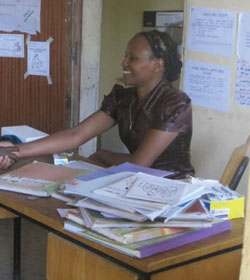9.3.3. Behaviour likely to promote trust: non-verbal communication
Without you realising it, your true feelings can be expressed by your body language or non-verbal communication (Figure 9.3). By this means you can communicate to your young clients the level of interest, attention, warmth and understanding you feel towards them. There are ways that you can take control of your body language and you should remember the acronym ROLES (Box 9.1) when you are communicating with young people. (There is more information on non-verbal communication in the Health Education, Advocacy and Community Mobilisation Module.)

Box 9.1 ROLES
R = Relax the client by using facial expressions that show interest
O = Open up the client by using a warm and caring tone of voice, i.e. help them to talk
L = Lean towards the client, not away from them
E = Establish and maintain eye contact with the client
S = Smile.
9.3.2 Attitudes likely to promote trust
